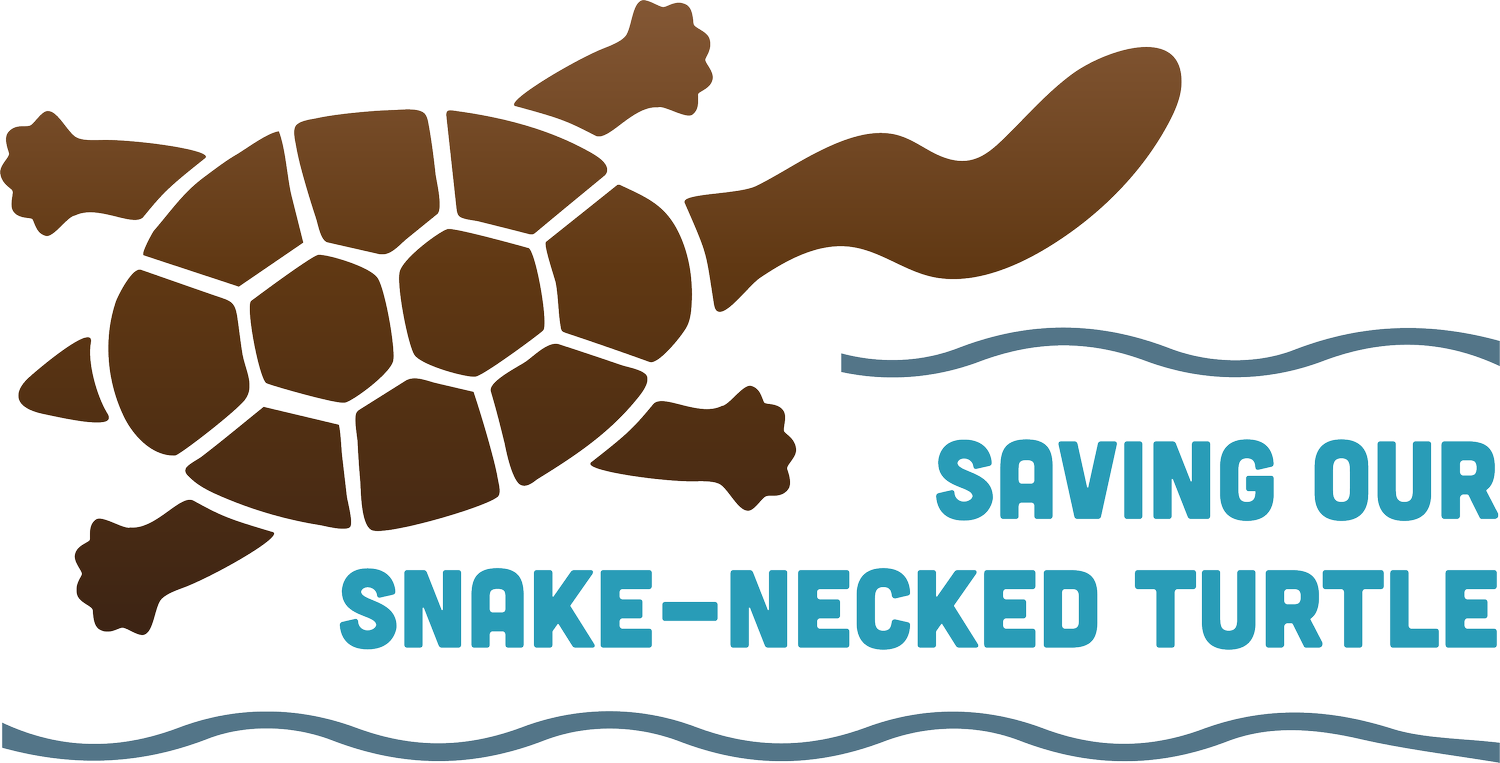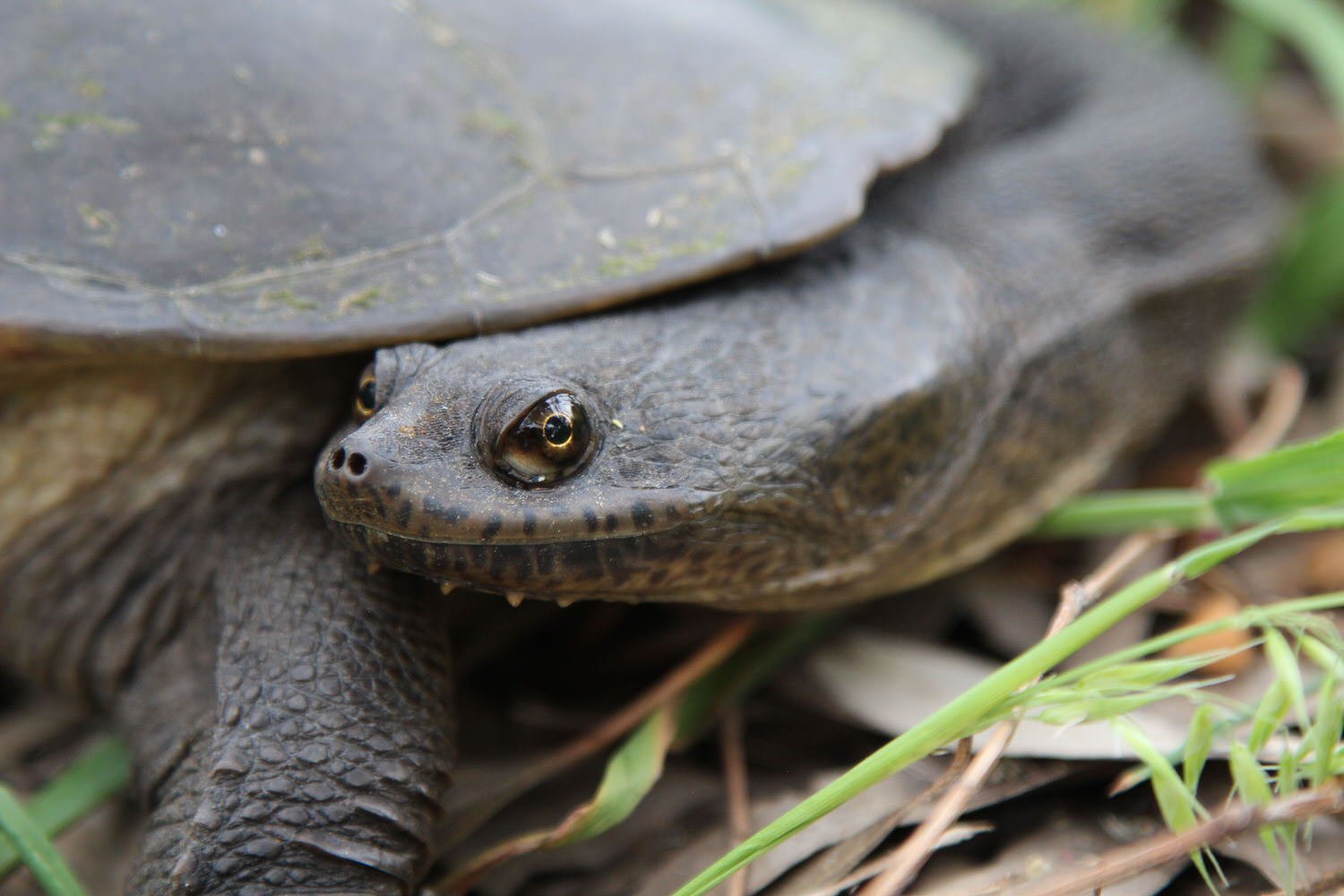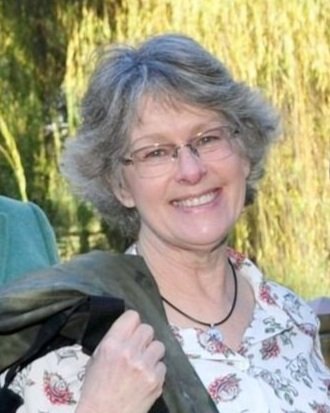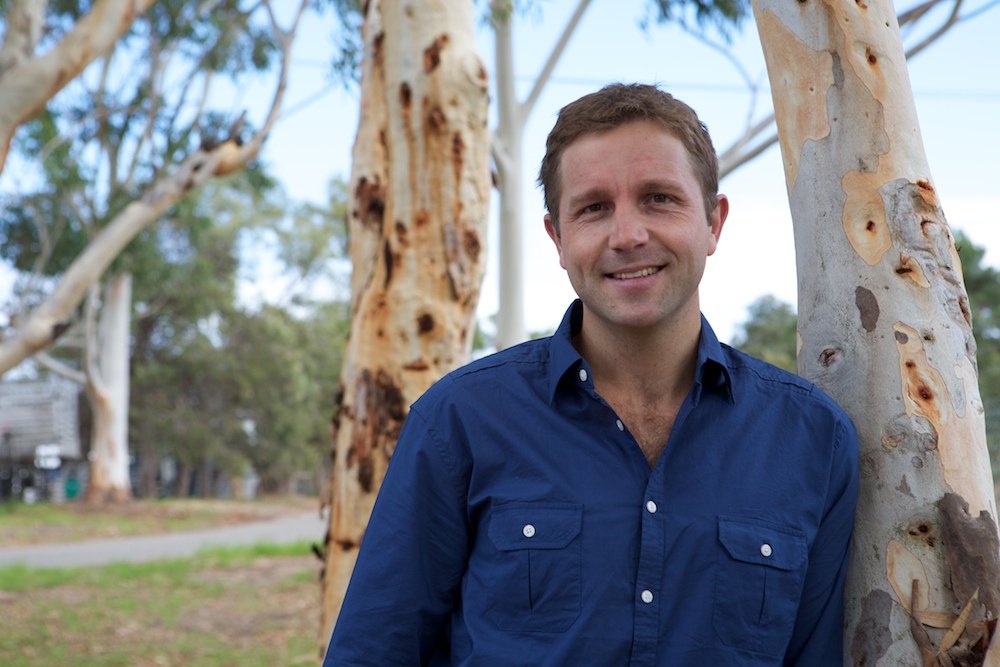About
Project Overview
Saving Our Snake-Necked Turtle (SOSNT) is a citizen science driven conservation project that aims to upskill the community in turtle monitoring and protection to ensure the southwestern snake-necked turtle flourishes into the future. The project will identify hotspots where threats to the species are occurring, enabling targeted management actions to be developed and implemented.
The project was inspired by the ‘Turtle Tracker’ project, originally developed by the turtle team at Murdoch University, who approached the City of Cockburn in 2019 to initiate a citizen science programme to combat the increased mortality of nesting female turtles and destruction of their nests at Bibra Lake. Additional partners came onboard to support the project including WA Wildlife, The Wetlands Centre, NatureLink Perth, and the Department of Biodiversity, Conservation, and Attractions.
In the first year of the Bibra Lake ‘Turtle Trackers’, the project attracted ~80 community members to learn all about the turtle and its threats, and to help monitor and protect nesting females and their nests. The Bibra Lake ‘Turtle Trackers’ ran for three years (2019-21) and gained momentum each year, attracting the attention of the media and other prospective partners interested in their own ‘Turtle Tracker’ team. As the southwestern snake-necked turtle was likely to be suffering increased mortality and nest destruction throughout the Perth metropolitan, and possibly its entire range, the need to train and deploy as many community-powered ‘Turtle Tracker’ teams as possible was evident.
In 2022, through a Lotterywest grant managed by the Perth South West Metropolitan Alliance, the project was able to expand. This is the Saving Our Snake-Necked Turtle (SOSNT) project.
Meet the Project Team
Dr Anthony Santoro
Turtle Ecologist
Project Manager
Dr Jane Chambers
Aquatic Ecologist
Project Leader
Dr Stephen Beatty
Aquatic Ecologist
Project Leader
Dr Catherine Baudains
Environmental Educator
Project Officer
About southwestern
snake-necked turtles
The southwestern snake-necked turtle (Chelodina oblonga – previously C. colliei), is endemic to aquatic systems within southwestern Western Australia (1). They can be found in a variety of permanent and semi-permanent wetlands that include natural and constructed lakes, swamps, rivers, creeks and reservoirs between the Hill River (inland from Jurien Bay), and the Fitzgerald River National Park (2, 3, 4, 5, 6, 7). It is the only native freshwater turtle species commonly found in the Perth metropolitan region following the range reduction of the western swamp turtle (Pseudemydura umbrina).
The species is the underwater apex predator within its range and is an opportunistic carnivore (8, 9). As an apex predator, C. oblonga plays a crucial role in aquatic ecosystems and is valuable to humans through helping to control insect populations. Furthermore, as it is a large-bodied species and visible in and around wetlands, it has an important role in community education on the value of maintaining biodiversity in wetlands; most of which have been severely altered or degraded on the Swan Coastal Plain since European settlement.
Chelodina oblonga is currently listed as ‘near threatened’ by the IUCN (10), although its status has not been assessed for 25 years. The most comprehensive study on the species populations involved surveying 33 Perth wetlands and revealed abundances of C. oblonga were alarmingly low and juvenile turtles were missing from most wetlands (3). Further research on C. oblonga highlighted that both introduced (red foxes – Vulpes vulpes) and native (Australian raven – Corvus coronoides) predators and wildlife-vehicle incidents on roads were increasing mortality rates of nesting adult females, while the aforementioned predators were increasing destruction of nests (11). Therefore, conserving and managing remaining populations in both natural and artificial waterbodies is required to help to halt the decline in abundances.
What you can do to help
Become a SOSNT ‘Turtle Tracker’.
Log any turtle-related observations on TurtleSAT.
Be aware of the Do’s and Don’t's to consider when interacting with our turtles in their natural environment.
References
Cann, J. & Sadlier, R. (2017) Freshwater Turtles of Australia. Australia: CSIRO Publishing.
Burbidge, A. A. (1967) The biology of south-western Australian tortoises. PhD The University of Western Australia.
Santoro, A., Chambers, J. M., Robson, B. J. & Beatty, S. J. (2020) Land use surrounding wetlands influences urban populations of a freshwater turtle. Aquatic Conservation: Marine and Freshwater Ecosystems, 30(5), 1050-1060. https://doi.org/10.1002/aqc.3324
Santoro, A. & Beatty, S. J. (2021) Population status of the oblong turtle in Bibra Lake. Centre for Sustainable Aquatic Ecosystems, Murdoch University.
Santoro, A., Newsome, R. & Beatty, S. J. (2022) Population status of the oblong turtle in Lake Claremont Centre for Sustainable Aquatic Ecosystems, Murdoch University.
Santoro, A., Newsome, R. & Beatty, S. J. (2022) Population status of the oblong turtle in Rockingham's wetlands (2021). Perth, Western Australia.
Santoro, A., Summers, V., Watsham, J. & Beatty, S. J. (2020) Population status of the oblong turtle in Armadale's wetlands. Centre for Sustainable Aquatic Ecosystems, Murdoch University.
Woldring, L. A. (2001) General ecology of the oblong turtle Chelodina oblonga (Testudines:Chelidae). Leeuwardern, The Netherlands.
Tysoe, L. (2005) The population structure, reproduction and diet of two urban populations of oblong turtle Chelodina oblonga Honours. The University of Western Australia.
Tortoise & Freshwater Turtle Specialist Group (1996) Chelodina oblonga (errata version published in 2016), 1996. Available online: [Accessed 18/05/2018].
Santoro, A. (2022) The implications of climate change and urbanisation throughout the lifecycle of a freshwater turtle PhD. Murdoch University.







